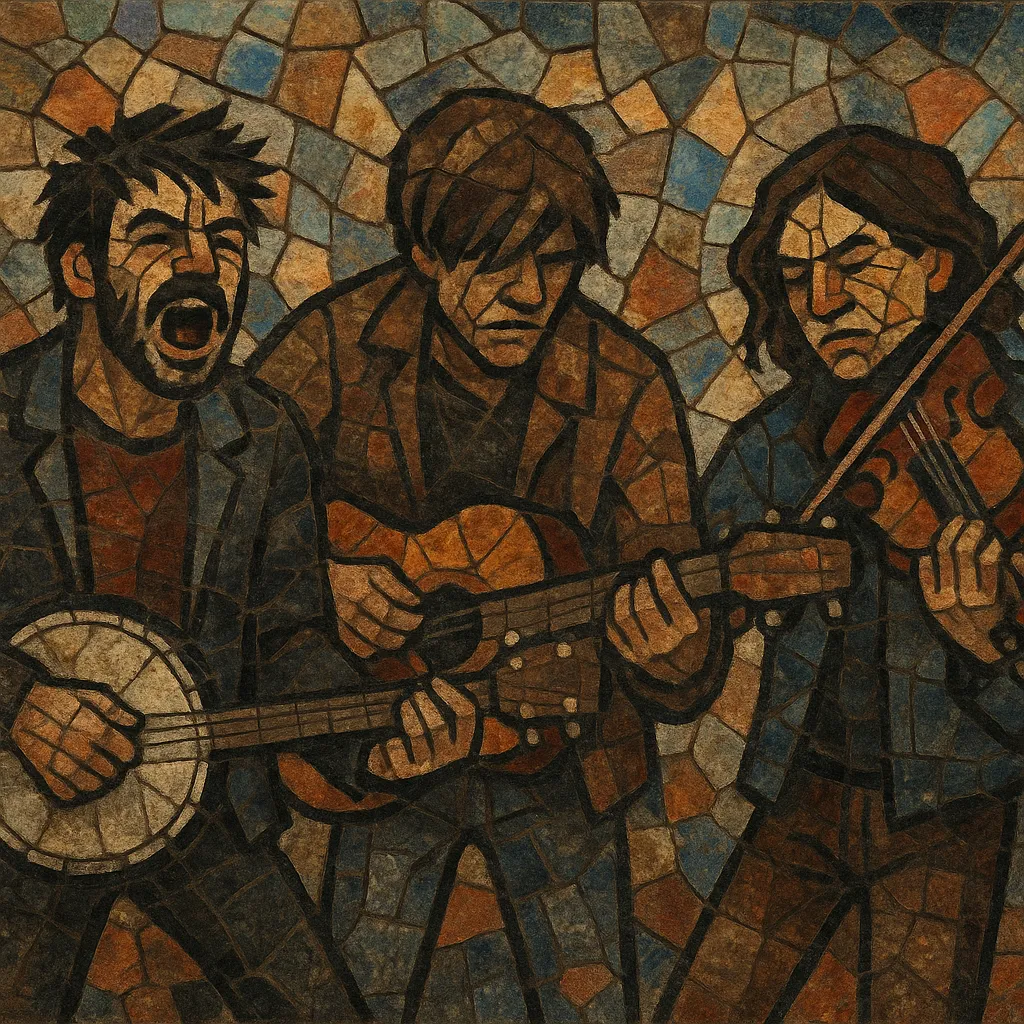Folk punk fuses the raw speed, attitude, and DIY ethos of punk with the acoustic instruments, storytelling, and melodic traditions of folk. It often features shouted sing‑alongs, gang vocals, and energetic strumming alongside fiddles, accordions, banjos, and acoustic guitars.
Lyrically, the genre ranges from personal confessionals and working‑class narratives to pointed political critique and anti‑establishment themes. Production can be intentionally rough or lo‑fi, reflecting its busking roots and community‑first approach to performance.
Folk punk emerged as punk’s first wave collided with resurgent folk traditions and busking culture in the UK and the US. Bands like The Mekons and The Pogues injected punk’s urgency into acoustic instrumentation and Celtic/English folk song forms, while acts such as Violent Femmes showed how spiky, minimal acoustic arrangements could deliver punk bite.
Through the 1990s, the scene broadened beyond Celtic influences. The Levellers helped popularize a festival‑friendly, politically outspoken strand in the UK, while US underground communities maintained a DIY network of house shows and indie labels. The genre’s ethics—mutual aid, directness, and accessible instrumentation—became as defining as its sound.
A new wave—Against Me! (early acoustic era), Defiance, Ohio, AJJ (Andrew Jackson Jihad), Wingnut Dishwashers Union, and later Days N Daze—cemented a scrappier, often busking‑derived style. Cheap recording tech and online sharing amplified zine culture, tour‑by‑couch networks, and participatory sing‑alongs, making folk punk a vibrant, community‑driven micro‑culture.
Today, folk punk’s influence is heard across Celtic punk and gypsy punk scenes, and its DIY blueprint informs indie and grassroots artists globally. The style remains a vehicle for social commentary, cathartic group singing, and hybrid instrumentation that keeps punk’s spirit alive without relying on volume or distortion.


